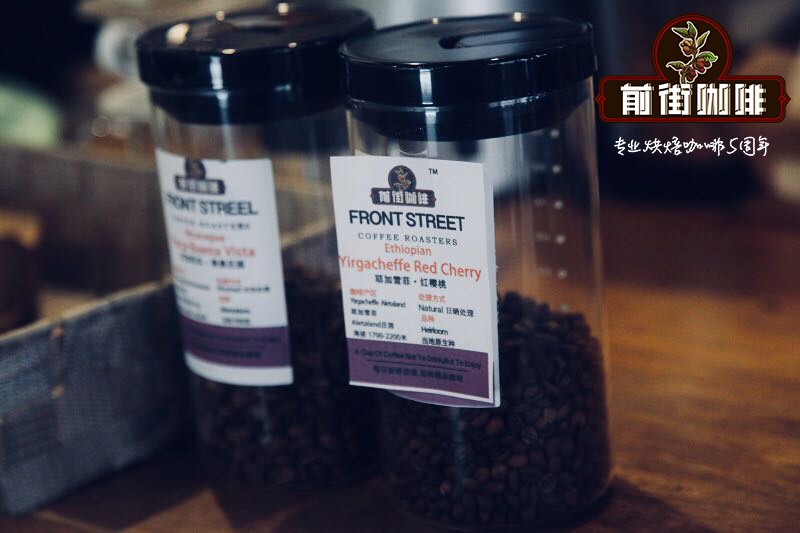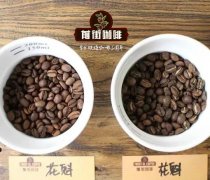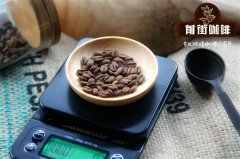How to buy coffee and raw beans? Home baking player raw beans purchase guide!

Professional coffee knowledge exchange More coffee bean information Please pay attention to coffee workshop (Weixin Official Accounts cafe_style)
Now the trend of baking beans at home is more and more popular, drinking coffee baked by yourself has a taste and a taste of life. When you get a good home bean dryer and read a lot of books or articles on how to bake beans, you are ready to show your skills, but there is a difficulty, that is, the selection of coffee beans.
As a fan of home-baked beans, you have to find a way to pick your own beans, roast them to their best flavor characteristics, and finally make your coffee the way you want, and maybe a lucky relative will receive your own beans.
But green bean shopping seems intimidating, so how exactly do I find the right coffee for me? This article provides some simple ways to recognize the differences in raw beans and find coffee that suits your taste.
Coffee beans are not all the same.
Colombia or Ethiopia? Washing or honey treatment? Bourbon or tibeka + cadura hybrid? Green beans have many properties and differences to consider, which affect not only the taste, but also how you bake the bean.
Here are some of the most important considerations:
1. Origin:
That is, coffee is grown in what environment, including climate, humidity, soil, etc., which will affect the aroma and flavor of coffee. Gradually narrow down the screening conditions from a wider range, comparing beans from different countries and regions before comparing the differences between farms and batches.
2. Breed:
Coffee is divided into "species" and "varieties," varieties are listed under species, and variety differences can have a huge impact on coffee flavor. Tasting yellow bourbon, SL-28, or geisha brings a completely different sensory experience.
3. Elevation:
Generally speaking, higher altitudes have lower temperatures, which slows the growth of coffee fruits, which in turn allows the fruits to develop higher sweetness. The result is a richer flavor, sweeter taste, and better acidity than lower-altitude beans.
When considering altitude, don't forget that different regions have different temperatures. Hawaii, for example, is too cold to grow coffee above 600 meters above sea level, but Hawaii Kona is famous. But in Ecuador's Colón Islands, coffee grown at an altitude of 200 meters is defined as fine coffee. These should all be taken into account when assessing the elevation at which coffee is grown, especially coffee from different countries or continents.
4. Green bean treatment method:
How coffee beans (coffee seeds) are extracted from the fruit.
Sun-treated/dry-treated coffees are exposed to the sun throughout the fruit and then the outer pulp is removed, making the beans sweeter and more fruity. Wash/wet coffee removes the pulp before drying and therefore has less sweetness, but at the same time has a higher flavor clarity and makes the acid brighter. Honey-treated coffee partially removes the pulp and retains part of the pectin layer for exposure, which makes honey-treated coffee sweeter and fuller than washed coffee.
In addition to the three more common treatments above, there may also be treatments such as monsoon treatment, wet stripping treatment, fermentation test, etc., which are usually in specific areas, such as monsoon treated coffee, which is stored only in warehouses during the wet season in India.
How to find the right coffee for you
You have to taste it before you know what coffee you want, and it's a lot of tasting.
Try different types of coffee and take notes on each coffee. Try to rate each coffee on a scale of one to ten. Then add notes on sensory sensations such as acidity, sweetness, body and taste, and aftertaste. You can also label the flavor and aroma of coffee, whether it's your favorite flavor or not, and write down basic information such as origin, variety, altitude and processing method if you can get information.
Any idea how to find green coffee beans? With all of this in mind, you'll soon be able to sift through coffee you like and dislike.
If you are brewing someone else's coffee, observe the beans and note the roasting temperature. Do beans have grease on the surface? Do they come in chocolatey colors? Or something more cinnamon?
Roast degree affects coffee flavor and aroma, generally speaking, the lighter the roast degree, the easier to taste the original special flavor of beans, including fruit aroma and acid. The roasting process adds flavor to the beans, which can easily overwhelm their natural flavor. Deeper roasts usually have a thicker texture, lower acidity, and a richer surface fat.
If circumstances permit, order single-serve coffee at a boutique coffee shop, which gives you the opportunity to learn about the coffee from the barista and identify the flavor of the beans from different regions.
Practical points of procurement
There are many green bean sellers who can sell green beans online and ship them around the world, but before you place an order, make sure the final cost, availability of beans, and other practical points.
Some green beans may be difficult to obtain in certain seasons, after all, coffee is a crop and has its harvest period. However, different countries have different harvest periods, just like bread and fruit, freshness affects the quality of coffee, and most people do not want to buy old beans or old beans for more than one year.
Some coffees may be too expensive for you to drink every day. There are also sellers who are only willing to sell large quantities of raw beans. Once you buy such a large quantity of raw beans, will you be willing to bake and consume them? Even if you could, do you have enough storage space to properly preserve raw beans?
Once you buy raw beans,
Now that you know more about coffee beans, you've got some samples to compare, and you've taken cup-test notes, it's time to finally buy some green beans and roast them at home.
You can experiment by selecting a production batch of coffee and presenting it in three to five different roasting methods. Different batches of coffee are then selected and roasted in the same way. Recording the results of these two experiments and comparing them will help you understand the relationship between roasting and the use of different coffee beans. Then repeat these steps: mix different beans with different degrees of roasting until you roast your favorite coffee flavor.
The cup test also allows you to learn a lot in a short time by sipping several cups of coffee at once and jotting down the flavors. Learning how to cup test also helps assess the quality of your roasted coffee.
How do you know where there is a cup test? Coffee exhibition, boutique coffee shop, any occasion open to the public cup test can be, you can pay more attention to coffee-related communities, fan pages.
The Specialty Coffee Association SCA also offers a number of sensory and roaster training courses, which are freely available to home roasters, and of course there is a lot of information on the Internet and coffee books, but it is necessary to verify the accuracy of the content.
There's nothing better than drinking your own coffee, which expands your coffee choices and allows you to discover for yourself what you like best and what works best for you.
Finally, remember that research is helpful, but the best way is to experiment yourself. The more coffee you drink and the more comparisons you make, the easier it is to find out what you like.
Important Notice :
前街咖啡 FrontStreet Coffee has moved to new addredd:
FrontStreet Coffee Address: 315,Donghua East Road,GuangZhou
Tel:020 38364473
- Prev

Why does coffee have to exhaust and raise beans? What does raising beans mean to us?
Professional coffee knowledge exchange more coffee bean information please follow the coffee workshop (Wechat official account cafe_style) Coffee as fresh as possible, right? This statement is actually not entirely true. Although no one wants to drink out-of-date old beans, the roasted coffee beans will be boiled directly, and their flavor will certainly disappoint you, because the coffee is still in a state of massive exhaust. Whether you are a baker or
- Next

Why can coffee beans be divided into male and female? The difference between male and female beans the price of male beans is much more expensive than that of female beans.
Professional coffee knowledge exchange more coffee bean information Please pay attention to the coffee workshop (Wechat official account cafe_style) many people like to drink coffee, a number of oily coffee beans, contains a lot of modern refreshing secrets. But you know what? In fact, there are not only many kinds of coffee beans, but also gender differences. Coffee experts also said: the amount of public coffee is small, but the coffee is brewed.
Related
- Guji coffee producing area of Guji, Ethiopia: Humbela, Shakiso, Wulaga
- What is the most expensive variety of Qiloso in BOP multi-variety group?
- How to store the coffee beans bought home?
- Why are Yemeni coffee beans so rare now?
- Ethiopian Sidamo all Red Fruit Sun Sun Santa Vini Coffee beans
- SOE is mostly sour? What does it mean? Is it a single bean? what's the difference between it and Italian blending?
- Is Italian coffee beans suitable for making hand-brewed coffee?
- How to choose coffee beans when making cold coffee? What kind of coffee beans are suitable for making cold coffee?
- Just entered the pit to make coffee, what kind of coffee beans should be chosen?
- Can only Japan buy real Blue Mountain Coffee? What are authentic Jamaican Blue Mountain coffee beans?

